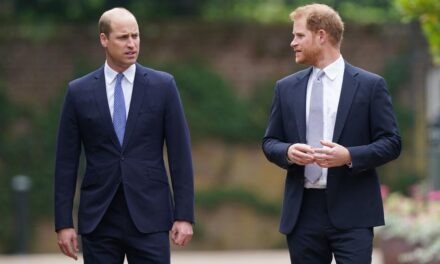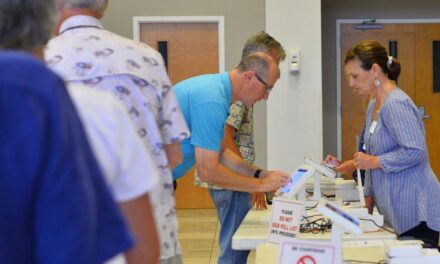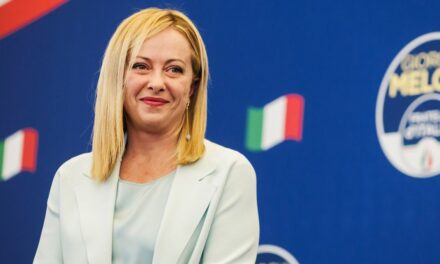
‘Non-standard’ ammo: US OKs $165M foreign military sale

US State Department approves foreign military sale of $165 million worth of ammunition to Ukraine
From CNN’s Barbara Starr, Ellie Kaufman and Jennifer Hansler
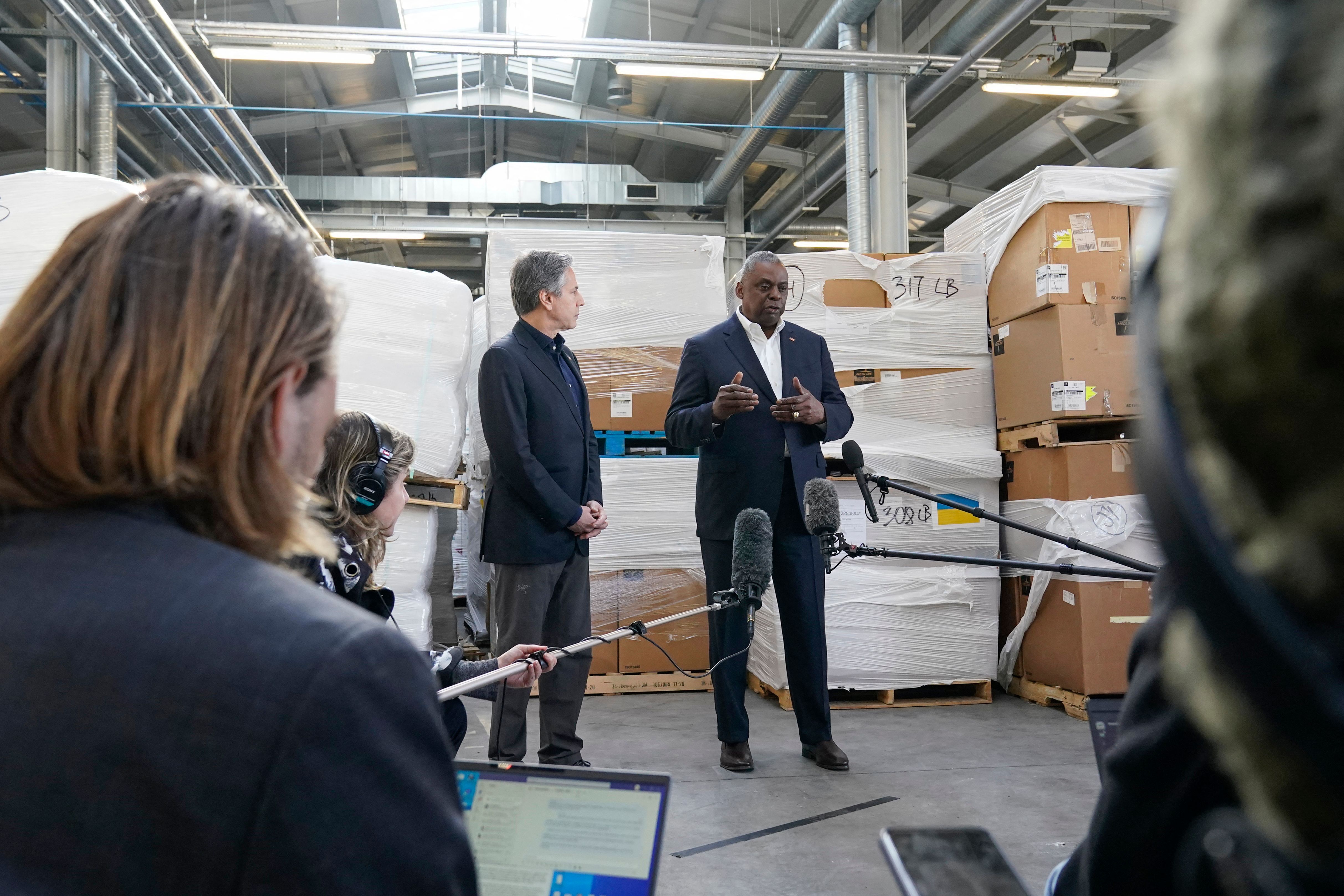
The US State Department approved a foreign military sale to Ukraine of $165 million worth of “non-standard ammunition” Monday, according to a release from the State Department. The Defense Security Cooperation Agency notified Congress of the sale on April 24, the release said.
The move was relayed to the Ukrainians during US Secretary of State Antony Blinken and US Secretary of Defense Lloyd Austin’s trip to Kyiv over the weekend.
A senior Defense Department official told reporters on Sunday that “it’s the kind of ammunition that the Ukrainians still use because they had so many of their systems are ex-soviet.”
“The proposed sale will improve Ukraine’s capability to meet current and future threats by maintaining the operational readiness of its forces,” according to the State Department press release.
The announced sale is just one of several ways the US is providing Ukraine with military assistance. On Thursday, US President Joe Biden authorized another $800 million of military assistance to support Ukraine using presidential drawdown funding.
Ukraine has requested to buy “various rounds of non-standard ammunition” including, but not limited to, “152mm rounds for 2A36 Giatsint; 152mm rounds for D-20 cannons; VOG-17 for automatic grenade launcher AGS-17; 120mm mortar rounds (non-NATO); 122mm rounds for 2Sl Gvozdika; BM-21 GRAD Rockets; 300mm rounds/rockets for MLRS “Smerch;” VOG-25 grenades for under barrel grenade launcher GP-25; 82mm mortar rounds; 125mm HE ammunition for T-72; 152mm rounds for 2A65 Msta; transportation; and other related elements of logistical and program support,” the release said.
Kyiv will remove Soviet-era sculpture commemorating “friendship” between Ukrainians and Russians, mayor says
From CNN’s Yulia Kesaieva
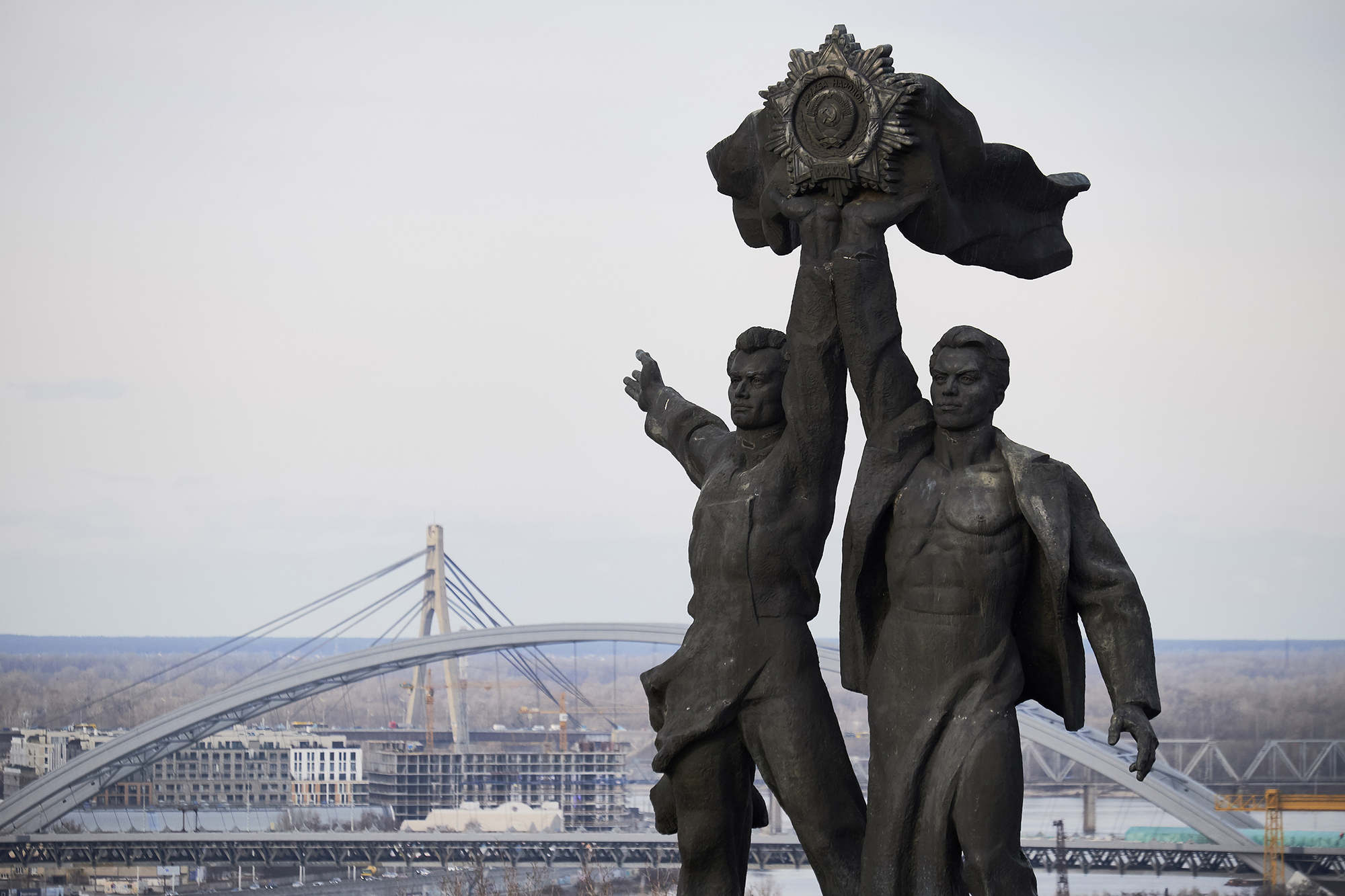
Workers will dismantle a Soviet-era sculpture in central Kyiv commemorating the “friendship” between Russians and Ukrainians, Kyiv Mayor Vitali Klitschko announced Monday.
“This week we will dismantle a bronze sculpture of two workers, erected in 1982 ‘to commemorate the reunification of Ukraine with Russia,'” Klitschko said. “The eight meters of metal of the so-called ‘friendship of two peoples’ will be removed from the center of Kyiv.”
A rainbow-shaped titanium arch stretches over the monument, which is perched on a scenic overview. Klitschko said the arch — originally called the People’s Friendship Arch — will remain, but that it would be renamed and highlighted with the colors of the Ukrainian flag.
Here are key takeaways from Blinken and Austin’s meetings in Kyiv
From CNN’s Kylie Atwood and Jennifer Hansler
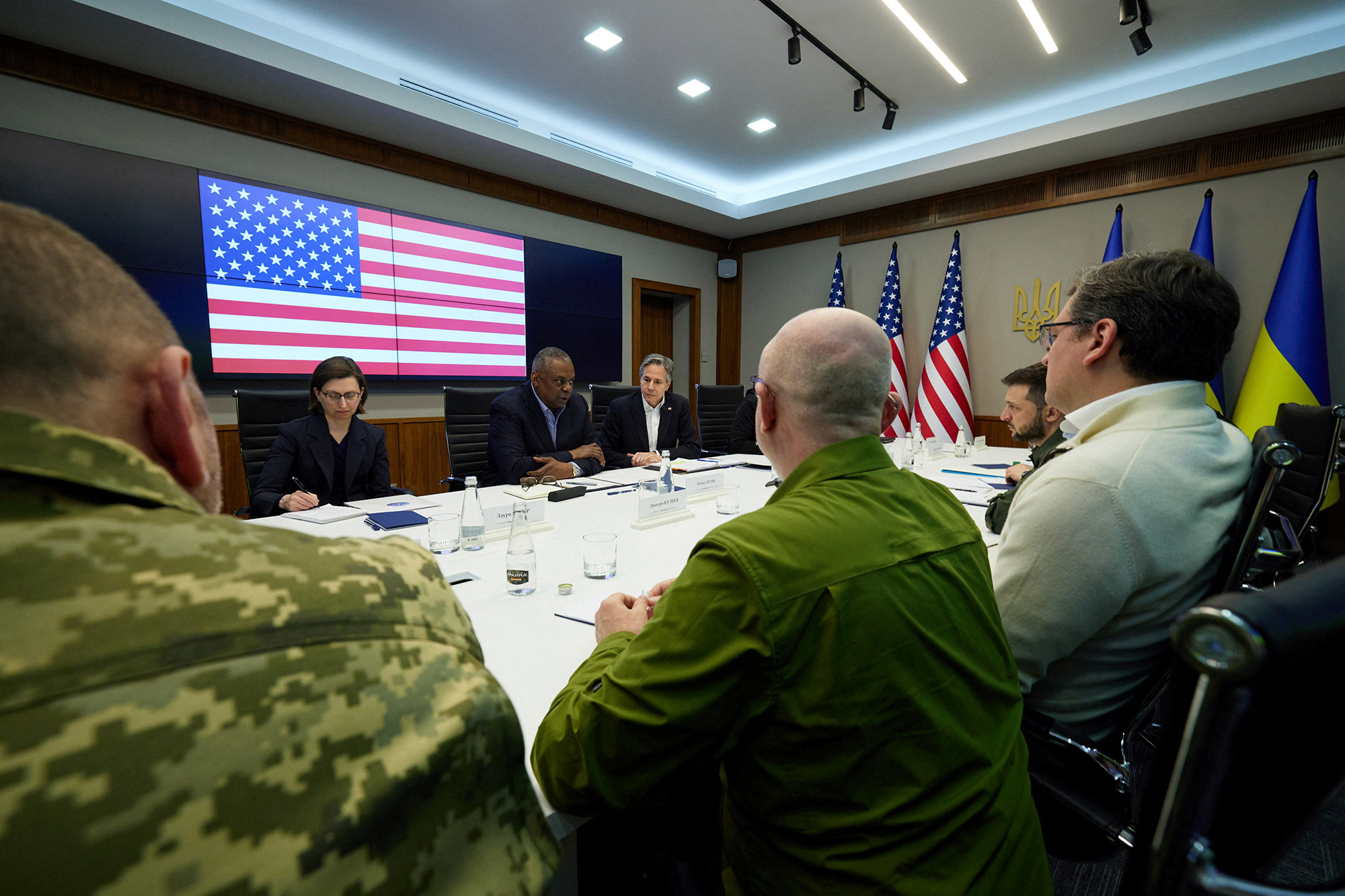
US Secretary of State Antony Blinken and Defense Secretary Lloyd Austin traveled to the Ukrainian capital of Kyiv on Sunday, where they met with President Volodymyr Zelensky and other Ukrainian officials, making them the highest-level US officials to have traveled to the country since Russia began its invasion.
Here are the key moments to come from this visit:
Blinken said US diplomats would return to Ukraine this week, a senior State Department official said, characterizing the move as a strong message of solidarity from the United States.
As part of the resumed US diplomatic presence in Ukraine, diplomats will “start with day trips into the Lviv” and “will graduate to potentially other parts of the country and ultimately, to resume presence in Kyiv,” according to a senior State Department official.
Austin: “We want to see Russia weakened” While in Kyiv, Blinken and Austin also met with Foreign Minister Dmytro Kuleba, Defense Minister Oleksiy Reznikov and Interior Minister Denys Monastrysky for an extended, roughly 90-minute bilateral meeting, the senior State Department official said. The defense minister outline some of the United States’ goals as the country continues to support Ukraine’s efforts in the war.
“We want to see Russia weakened to the degree that it can’t do the kinds of things that it has done in invading Ukraine,” Austin said at a news conference at an undisclosed location in Poland near the Ukrainian border following the trip to Kyiv. “So it has already lost a lot of military capability. And a lot of its troops, quite frankly. And we want to see them not have the capability to very quickly reproduce that capability.”
More aid to Ukraine Blinken and Austin discussed the Biden administration’s intention to provide $713 million in additional foreign military financing to Ukraine and allied European and Balkan partners, according to the senior State Department official and a senior Defense Department official.
US President Joe Biden on Monday announced that he will nominate Bridget Brink as US ambassador to Ukraine. The post that has been without a confirmed ambassador since Marie Yovanovitch was recalled in May 2019. Brink is the current US ambassador to Slovakia.
Blinken and Austin’s visit came as the first tranche of about 50 Ukrainians will complete artillery training in a country outside Ukraine, the defense official said. Another tranche of about 50 Ukrainians will also begin training soon, a defense official said.
Zelensky’s office issued a readout of the meeting on Monday, stressing the importance of the US officials’ visit and saying the country “counts on the support of our partners.”
Officials reiterate no involvement by US forces In a background briefing, the State and Defense officials made clear that the US military would still not be involved directly in the war.
In the Monday press briefing, Austin said the US believes Ukraine can win the war against Russia with “the right equipment and the right support.”
Will Biden visit? While officials hailed the trip as a testament to the US commitment to Ukraine, they have also faced questions about why Biden did not make the trip himself.
“The President of the United States is somewhat singular, in terms of what travel would require. So it goes well beyond what a Cabinet secretary would or what virtually any other world leader would require,” the State Department official noted.
UK Prime Minister Boris Johnson visited the country earlier this month. Top officials from the EU and the Baltics have also visited Zelensky in Kyiv.
Read the full report here:

What’s a land bridge? Here’s what Putin is trying to do in Ukraine
From CNN’s Ben Morse
Russia last week revealed that the goal of its invasion of Ukraine was to take “full control” over the southern part of the country as well as the eastern Donbas region — an aim that if achieved, would enable it to create a land corridor through Ukrainian territory connecting the Russian region of Rostov with Crimea, the peninsula it annexed in 2014, and beyond.
Maj. Gen. Rustam Minnekaev, the acting commander of Russia’s Central Military District, was quoted by TASS, a Russian state news agency, as saying Friday that the goal was to create a land corridor between Ukraine’s eastern Donbas region and Crimea.
Speaking at the annual general meeting of the Union of Defense Industry Enterprises of the Sverdlovsk region, he added that control over Ukraine’s south would potentially give Russian forces access to Transnistria, a separatist statelet in Moldova, where a contingent of Russian forces has been stationed since the early 1990s.
As the second phase of Russia’s invasion continues, Russian forces that were originally deployed to the north of Ukraine, after taking heavy losses, have been redeployed — along with fresh troops — and are now piling into Ukraine from the northeast, with Russian military officials claiming that their strategic goals had shifted to taking all of the eastern Donbas region.
Russian forces at present have only partial control of southern Ukraine, with the Ukrainian government still in control of the key cities of Mykolaiv and Odesa and some Ukrainian forces holding out in the Azovstal steel factory in the encircled port of Mariupol.
In 2018, Russia opened a 19-kilometer bridge (more than 5 miles) over the Kerch Strait, linking its Krasnodar region by road with the Crimean peninsula it annexed in 2014. But a land corridor would mean Russian controls a huge swath of Ukrainian territory linking up with Crimea.
“If Russia scores a win in Mariupol and gains a land bridge, it will have secured control of more than 400 kilometers (or 249 miles) of the Black Sea coast since the start of the war and denied Ukraine access to 80 percent of its previous coastline, further destroying its economy,” an analysis in Foreign Policy said last week.
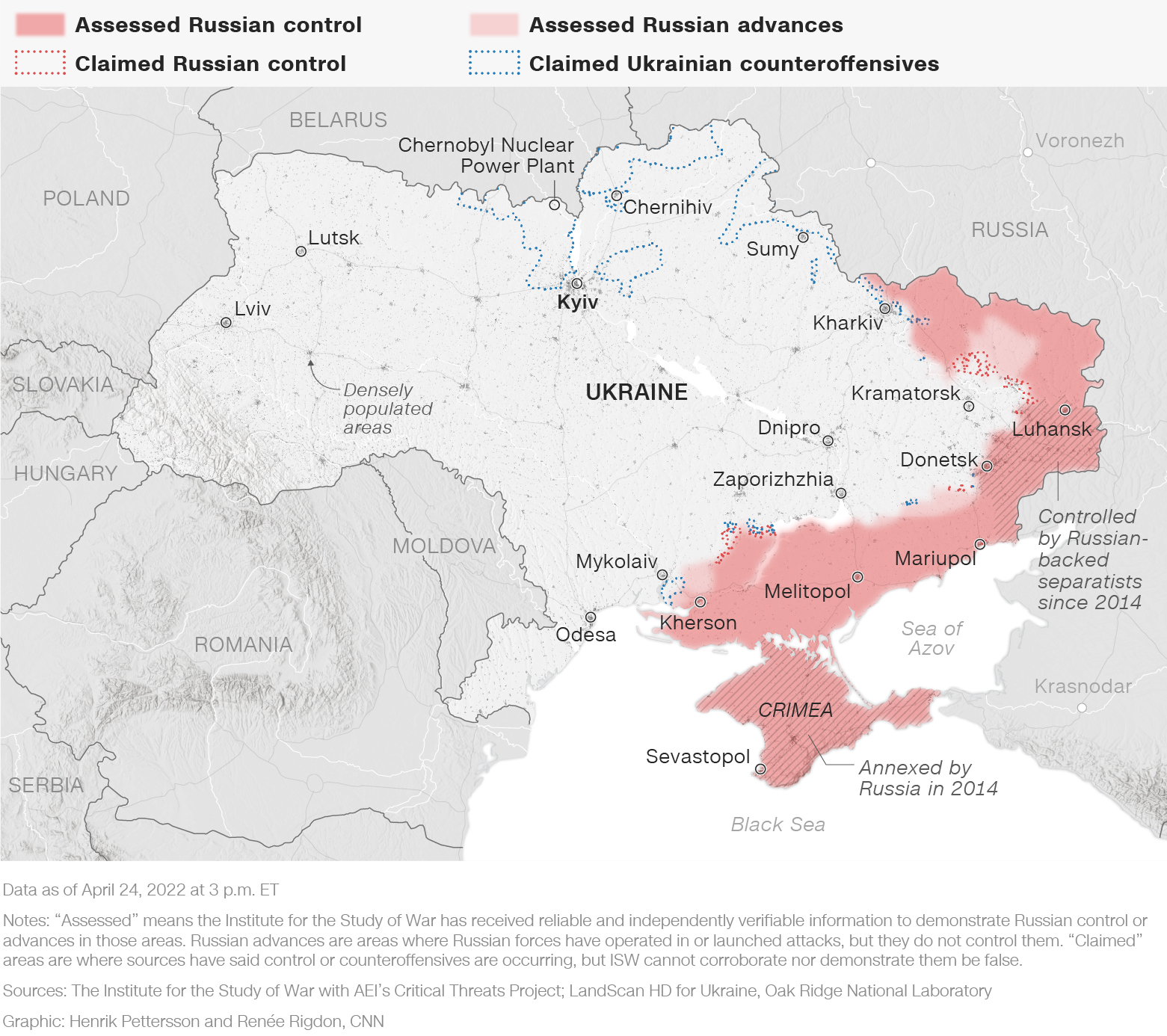
Russia continued its assault on the east and south of Ukraine over the weekend, a time during which many Ukrainians attempted to celebrate one of their most important holidays, Orthodox Easter.
At least eight people were killed — including a three-month-old baby — following Russian missile strikes on the southwestern port city of Odesa, Ukrainian President Volodymyr Zelensky said Saturday, condemning the attack on the eve of Orthodox Easter Sunday.
Ukrainian presidential adviser Mykhailo Podolyak said Russian forces were “continuously attacking” the Azovstal steel plant in Mariupol on Sunday.
The military head of the south-central city of Kryvyi Rih said Sunday that Ukraine had observed preparations for a possible offensive by Russian forces from the Kherson region, adding defenses were being bolstered in the area.
Ukrainian deputy prime minister: No agreement with Russia on corridor to evacuate Azovstal plant in Mariupol
From CNN’s Nathan Hodge and Julia Presniakova in Lviv
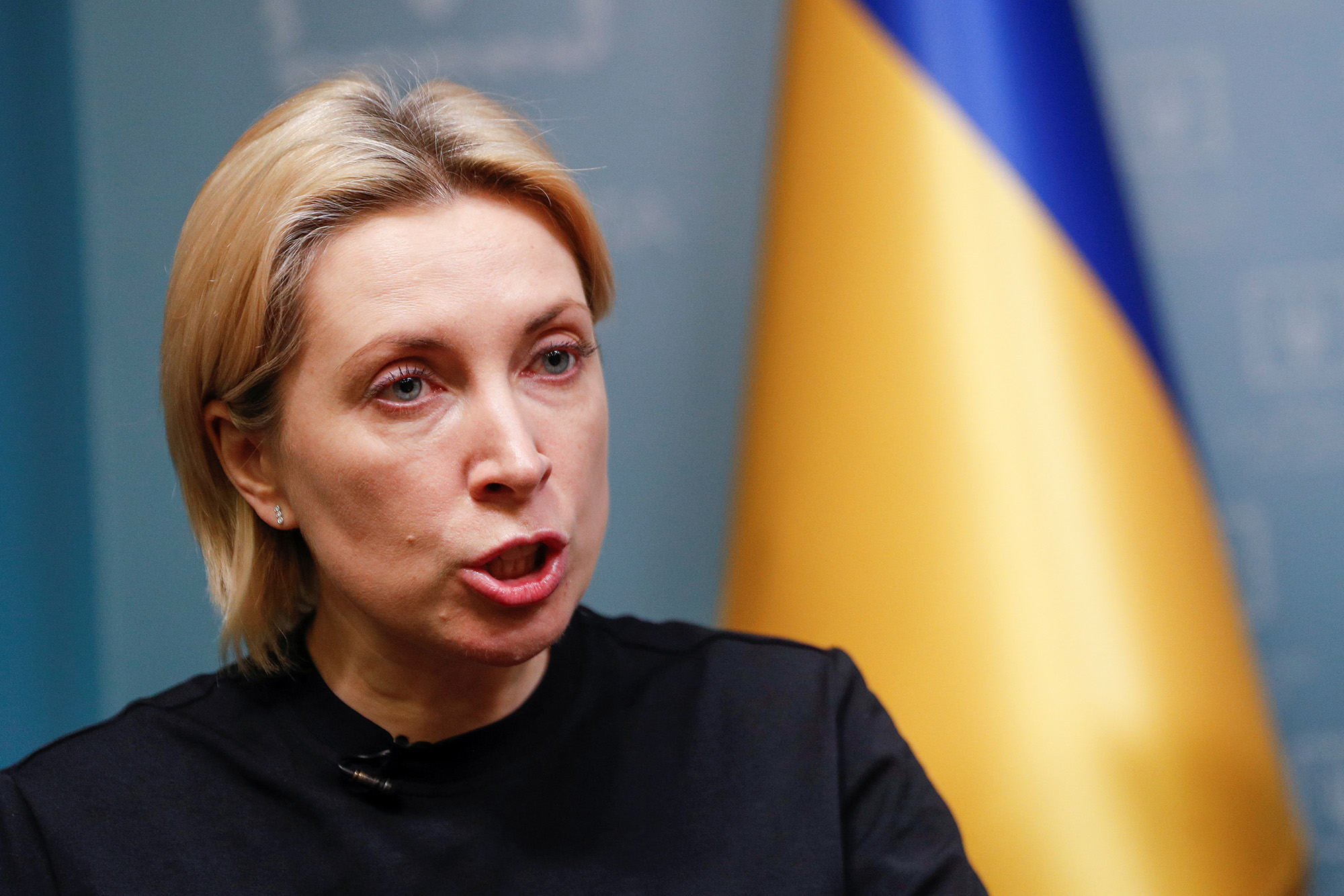
No agreement on a corridor had been reached with Russia for the evacuation of civilians from the Azovstal steel plant in Mariupol, Ukrainian Deputy Prime Minister Iryna Vereshchuk said Monday.
“Today, the Russian side once again announced the existence of a corridor for civilians to leave Azovstal,” she said in a statement on Telegram. “This could be believed if the Russians had not broken the humanitarian corridors many times before. I know what I am saying because, on behalf of the president, I am personally conducting such negotiations and organizing humanitarian corridors. It is important to understand that the humanitarian corridor is opened by agreement of both sides. The corridor, announced unilaterally, does not provide security, and therefore, in fact, is not a humanitarian corridor.”
“So, I declare officially and publicly: unfortunately, there are no agreements on humanitarian corridors from Azovstal today,” Vereshchuk added.
Russia’s Ministry of Defence issued a statement Monday offering to cease all hostilities around the Azovstal plant, a sprawling facility where Ukrainian forces are still holding out, to allow civilians to leave “in any direction they choose.”
Vereshchuk said the Ukrainian side had asked UN Secretary-General Antonio Guterres to initiate and and guarantee an evacuation corridor for civilians from Azovstal. Guterres is slated to meet separately with Ukrainian President Volodymyr Zelensky and Russian President Vladimir Putin.
“In particular, we ask that representatives of the United Nations and the International Committee of the Red Cross be present in the humanitarian column,” Vereshchuk said. “We hope for the effectiveness of the UN Secretary General’s talks with Russian representatives.”
Russia offers ceasefire for civilians to leave Azovstal plant in Mariupol, says defense ministry
From CNN’s Anastasia Graham-Yooll
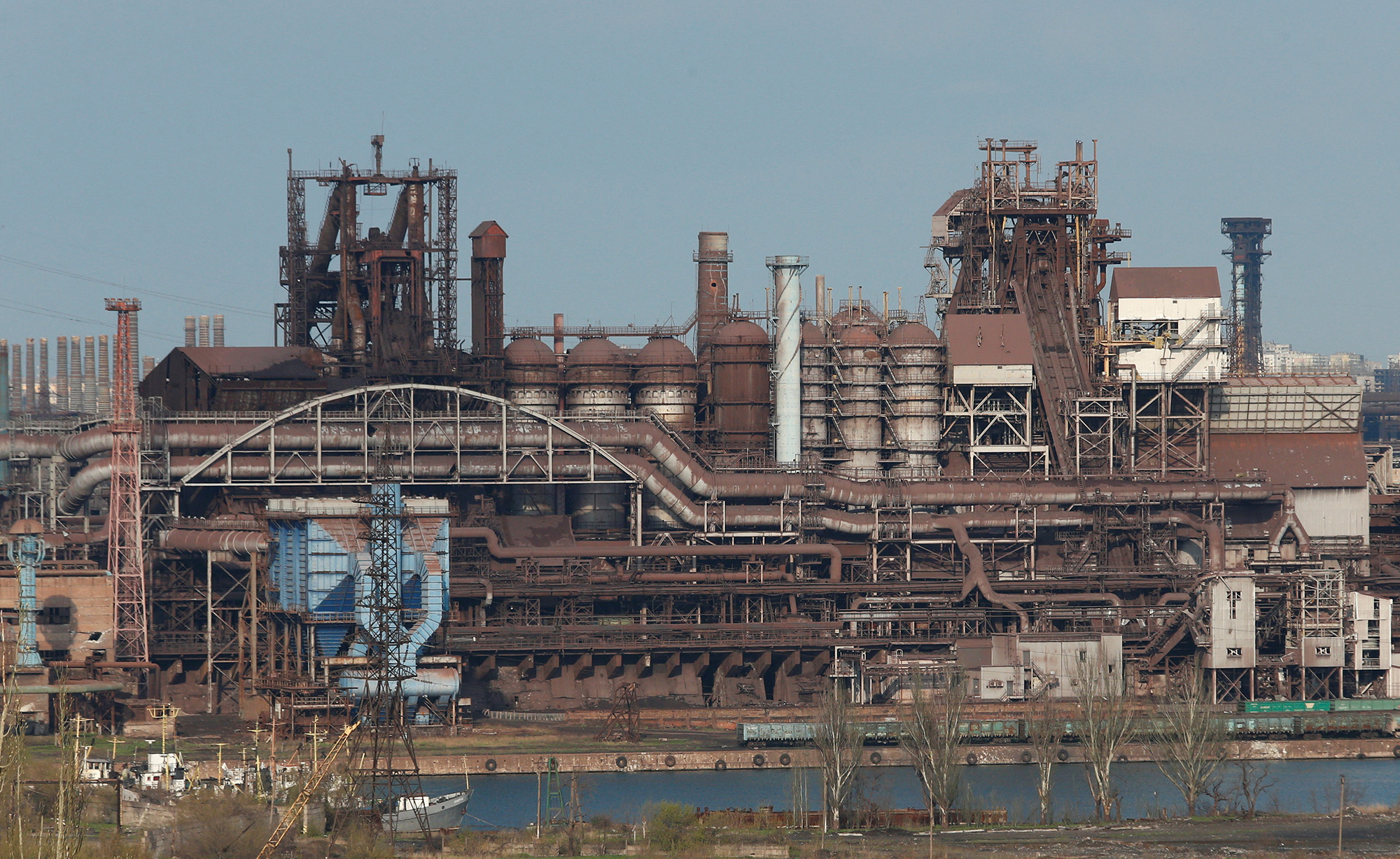
Russia’s Ministry of Defense has offered to cease all hostilities around the Azovstal steel plant in besieged Mariupol to allow civilians to leave “in any direction they choose.”
“The Armed Forces of the Russian Federation and the formations of the Donetsk People’s Republic from 14:00 (Moscow time) on April 25, 2022 unilaterally cease any hostilities, units are withdrawn to a safe distance and ensure the withdrawal of the specified category of citizens in any directions they choose,” the statement said.
Issued on behalf of the head of the Russian Federation Joint Coordination Headquarters for Humanitarian Response, Colonel-General Mikhail Mizintsev, the statement also claimed a “permanently operating round-the-clock humanitarian corridor” would be open for the evacuations of civilian plant workers, women and children.
Ukrainian officials have said Russia has repeatedly broken pledges to allow civilians safe passage from Azovstal. US and Ukrainian officials have also alleged that Russian forces have forced civilians looking to escape Mariupol into separatist-held territory and into Russia itself.
Ukrainian troops hunkered down in the vast plant have previously rejected Russia’s offers to surrender, and issued videos of women and children sheltering in the basement of the facility.
Mizintsev said Ukrainian troops should indicate readiness to accept the ceasefire by raising white flags around the Azovstal plant perimeter.
The ceasefire offer will also be broadcast to Ukrainian troops by local radio channels at 30-minute intervals, according to the statement.
“The Russian Federation publicly and officially declares that there are no obstacles to the exit of civilians from Azovstal,” the statement reads.
Some context: The CEO of the company that owns Azovstal told CNN last week that the situation was “close to a catastrophe,” with families running out of water, food and vital supplies.
Russian President Vladimir Putin on Thursday said there was no need for his forces to storm the Azovstal factory but ordered them to blockade it “so that a fly can’t get through.” He added that Russia would offer the remaining Ukrainian defenders the opportunity to lay down arms.
Ukrainians used to dress up to visit and take photographs in this building. Now it is completely destroyed
From CNN’s Aditi Sangal

“This was a place people came to pose for photographs. This was a place you would dress nicely to visit. And now this is what’s left of it,” CNN’s Clarissa Ward reported from the destroyed regional state administration building in Kharkiv as Russian forces continue to attack Ukraine’s second-largest city.
“Just today, we have heard pretty much a constant stream of bombardment since about 4:30 in the morning. Often it goes on all night. And the mayor here says that 25% of the buildings in this city have been hit during strikes,” Ward reported. “Just try to get your head around the enormity of that figure.”
The mayor told Ward that 67 schools, 54 kindergartens and 16 hospitals have been hit.
Ward explains: “Kharkiv is 30 miles (about 48 kilometers) away from Russia … There are a lot of important supply routes for the Russians to get more ammunition and weaponry to places like Izium, and that’s why it’s strategically important.”
Watch CNN’s report on the ground in Kharkhiv:
It’s 3 p.m. in Kyiv. Here’s what you need to know
Russian forces have made only “minor advances” in eastern Ukraine, but authorities in the country’s south-central region have warned Moscow may be planning a new offensive there. Meanwhile, Russian forces have struck five railway stations in central and western Ukraine, according to Ukraine’s state railway company.
Here’s the latest on Russia’s invasion into Ukraine if you’re just joining us:
- Rumors of new Russian offensive: The Zaporizhzhia regional council said it was preparing for defense after reports of Russian forces massing in south-central Ukraine. The city of Zaporizhzhia has been a key way station for evacuees departing the encircled city of Mariupol and Russian-held areas of southern Ukraine.
- Russia hits railway stations: Russian forces struck five railway stations in central and western Ukraine on Monday morning as part of a campaign to “systematically destroy railway infrastructure,” according to the chairman of Ukrzaliznytsia, Ukraine’s state railway company. The rail system has become a vital cog in the country’s war effort, ferrying essential supplies in, and desperate civilians out of harm’s way.
- Luhansk suffers water and power outages: Heavy Russian shelling means “almost the entire Luhansk region is without water supply,” said Serhiy Hayday, head of the regional military administration, adding that 30,000 families were without electricity.
- Russian progress limited: Russian forces have made only “minor advances” since shifting their focus to taking control over the eastern Donbas region of Ukraine, the UK Ministry of Defence (MoD) said Monday. “Without sufficient logistical and combat support enablers in place, Russia has yet to achieve a significant breakthrough,” said the MoD on Twitter.
- US visit: US Secretary of State Antony Blinken and Defense Secretary Lloyd Austin met Ukrainian President Volodymyr Zelensky in Kyiv on Sunday, making them the highest-level US officials to have traveled to the country since the Russian invasion began. Blinken said during the meeting that US diplomats would return to Ukraine this week.
- Mariupol under attack: Ukrainian presidential adviser Mykhailo Podolyak said Russian forces were “continuously attacking” the encircled Azovstal steel plant in the besieged city of Mariupol on Orthodox Easter Sunday. Russian President Vladimir Putin claimed earlier this week that Russia forces had achieved the “liberation” of Mariupol, but ordered his forces to stop short of taking the Azovstal plant, the last major bastion of Ukrainian defense in the city.
- Kherson: The military head of the south-central city of Kryvyi Rih said Sunday that Ukraine had observed preparations for a possible offensive by Russian forces from the Kherson region, adding defenses were being bolstered in the area. In televised remarks, Oleksandr Vilkul said Russian forces were “forming an offensive strike formation in our direction in the Kherson region.” Vilkul said the Kryvyi Rih garrison was in a state of readiness and had defenses prepared.
- UN visit: UN Secretary-General Antonio Guterres “will be received by President Vladimir Putin” on Tuesday in Moscow, after having a working meeting and lunch with the foreign minister of Russia, the UN said. He is also expected to meet Zelensky on Thursday in Ukraine, according to a UN spokesperson.
- Russia’s onslaught: An adviser to Zelensky’s administration said Sunday that Russia was “trying to depopulate the east of Ukraine,” amid heavy fighting there. Earlier this week, Russia revealed that the goal of its invasion of Ukraine is to take “full control” over southern Ukraine as well as the eastern Donbas region, which has been the front line of the country’s conflict with Russia since 2014.
Analysis: Putin just lost an opportunity to gain a major ally in the West
Analysis from CNN’s Joshua Berlinger in Paris
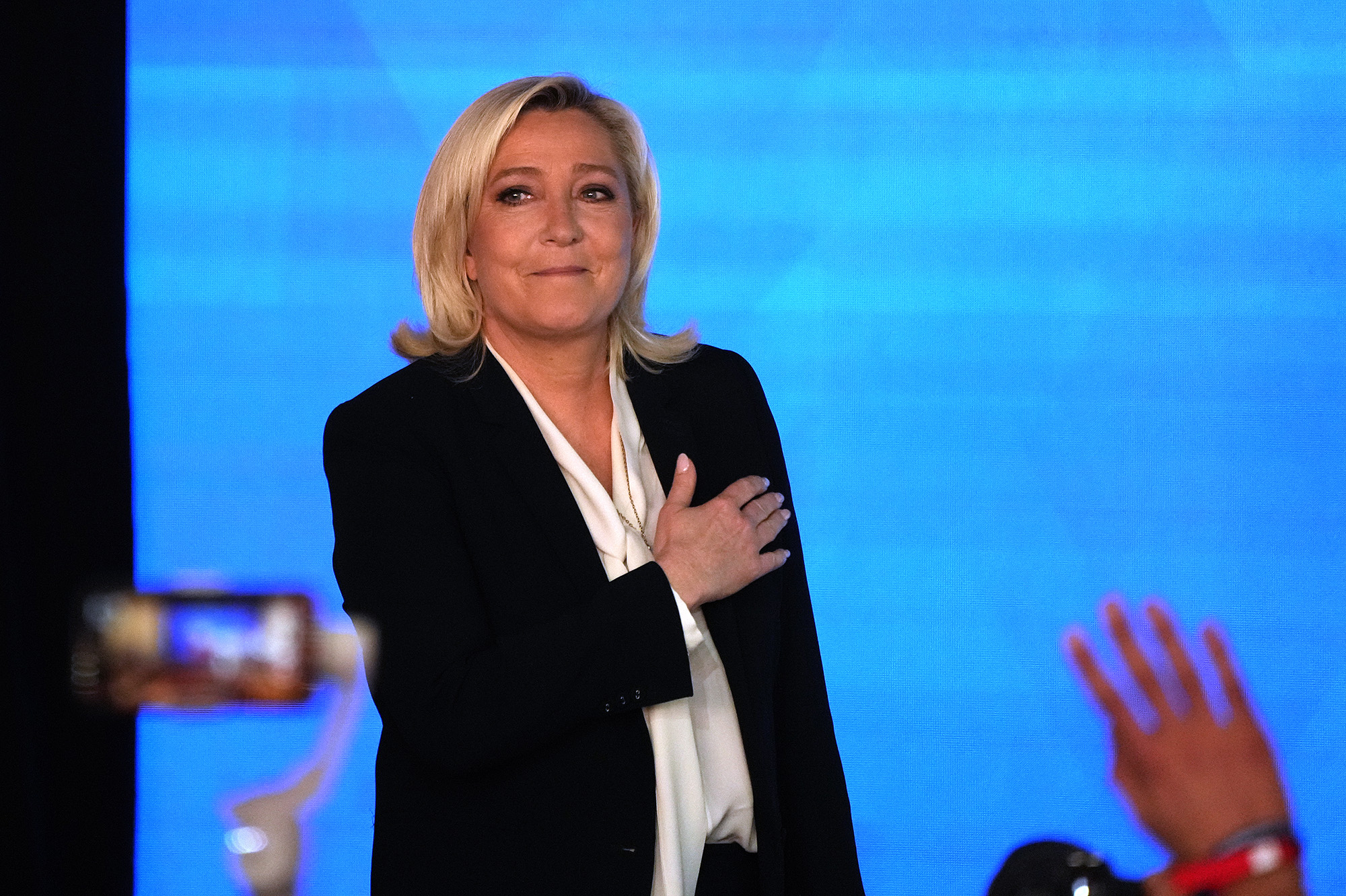
With Marine Le Pen’s loss in the runoff of the French presidential election on Sunday, Russian President Vladimir Putin may have just lost his best shot at getting a major geopolitical partner in the West.
Le Pen has, historically, been a vocal admirer of Putin, even visiting him while campaigning for the presidency in 2017. She is famously critical of France’s commitments to the European Union and NATO, and wants France to pull out of the latter’s integrated command. Any action along those lines would align with Putin’s geopolitical goals of fracturing Western partnerships and alliances, which he views as existential threats to Russia.
Had she won, Putin might have had a future partner inside Europe and NATO and an ally among the five permanent members of the United Nations Security Council, of which Russia is also one.
Le Pen backtracked on her support for Putin after Russia invaded Ukraine, but in a news conference focused on foreign policy held before the election, she said she wanted France to spearhead an approach of “strategic rapprochement” between Russia and NATO once the war in Ukraine ended. Given the West’s outrage and unity in response to the Kremlin’s invasion, it’s highly unlikely the two sides will find common ground any time soon.
She’s not done yet: During her concession speech Sunday, Le Pen chose to highlight her strong performance — she won 41% of the vote — and looked ahead to June’s parliamentary elections in France.
“The historic score of this evening puts us in an excellent position,” she said. “The game is not quite over.”
Despite her decision to backtrack on her support for Putin, Le Pen’s previous positions — and her party’s decision to take out a loan from a Russian-Czech bank several years ago — almost certainly cost her votes.
Whether those positions will cost her in the next vote remains to be seen.
Source: https://www.cnn.com/europe/live-news/russia-ukraine-war-news-04-25-22/h_089e9a8bd8a82ee09f16ceee253350b6






